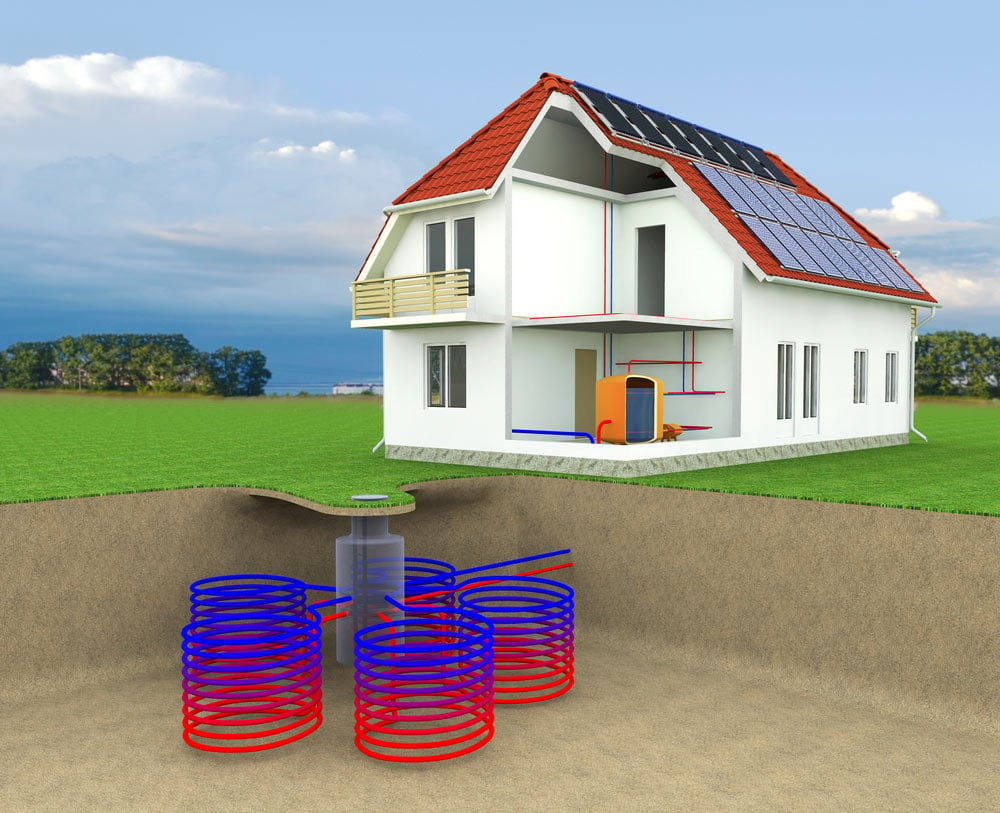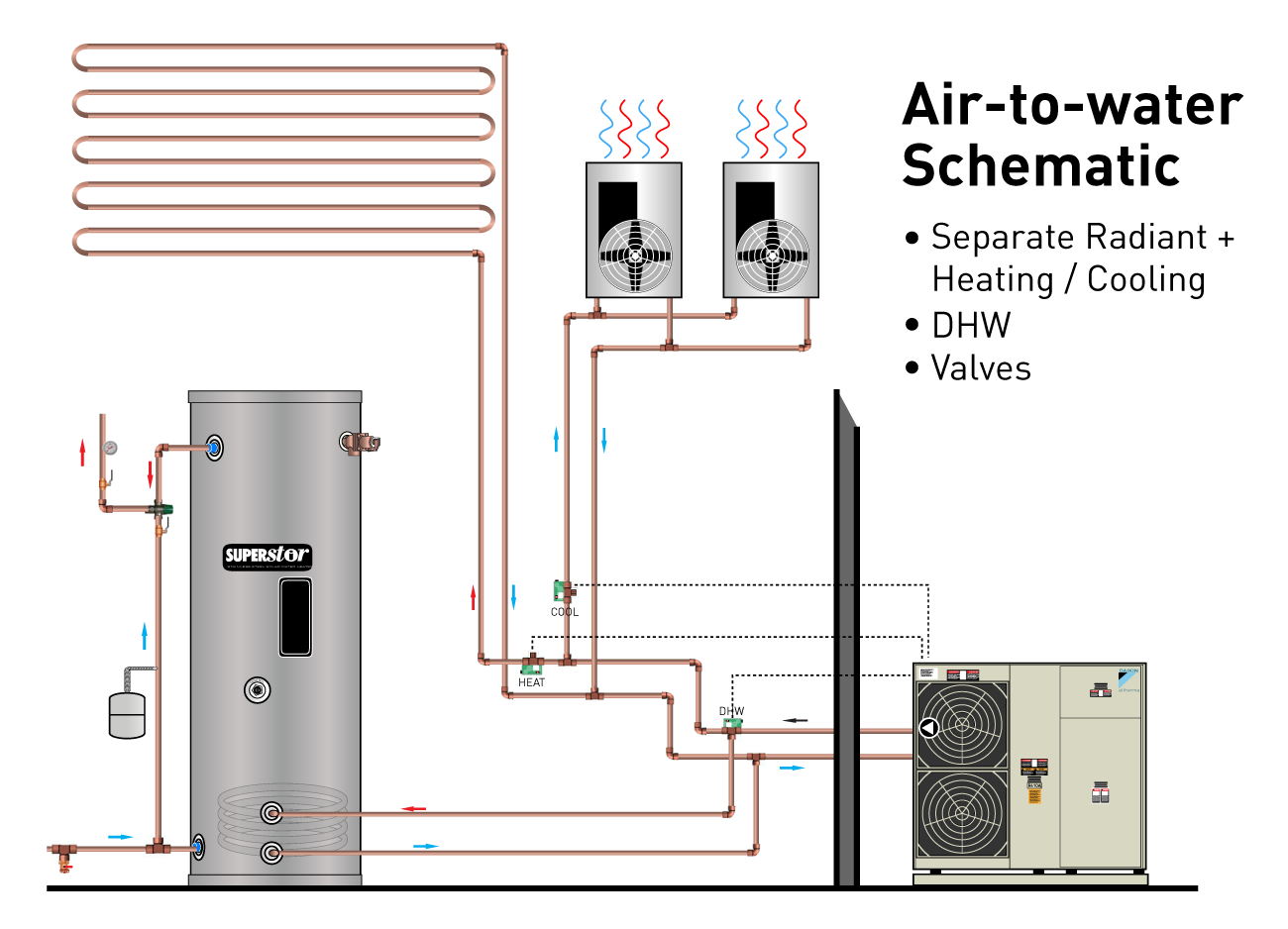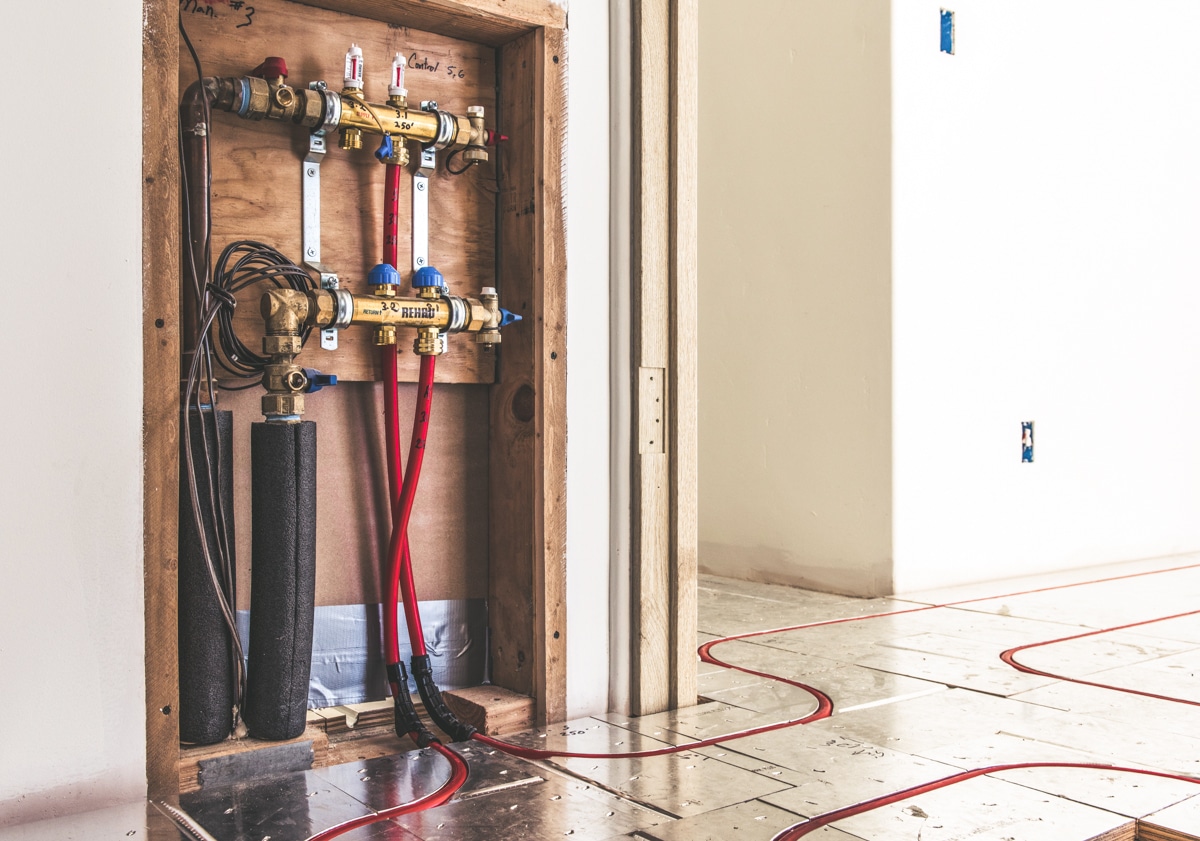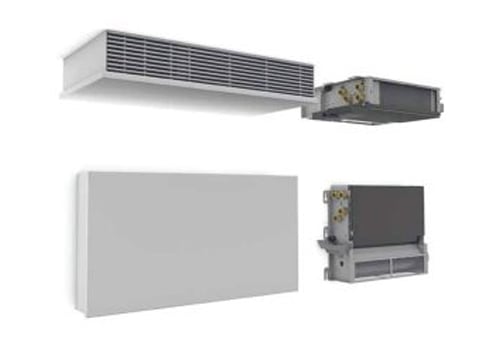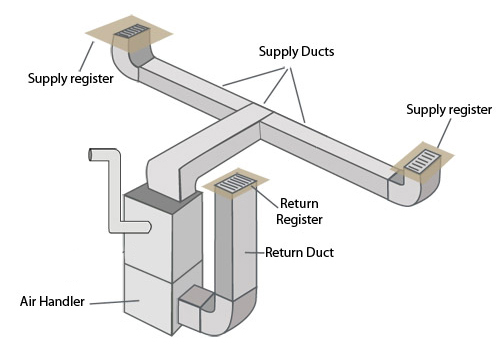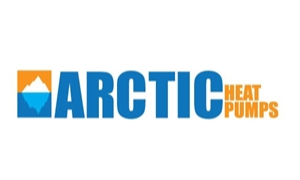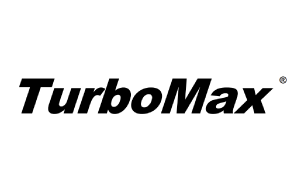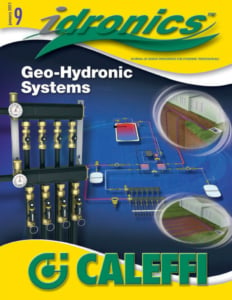Air to Water – Geothermal
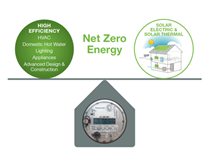
We are all familiar with electric air to air heat pumps which provide forced air heating and cooling…sometimes referred to as mini splits. These air-to-air heat pumps have been used for whole house and spot cooling and heating combined with an electric heat pump water heater providing the domestic hot water.
There is also very efficient air to water and geothermal heat pumps (Hydronic Heat Pumps) that generate hot and chilled water for hydronic systems plus more efficient domestic hot water supply. All these types of heat pumps can cut electric heating, hot water and cooling energy very significantly opening the door for being powered by reasonably sized solar systems or as cost-effective alternatives to propane and oil fueled systems.
In the past few years, with the development of inverter technology, air to water heat pumps can provide warm water at low ambient air temperatures, boosting their geographical range and popularity. Combined hydronic heat pump systems offer the comfort of radiant heat and more economical hot water generation than a stand-alone heat pump water heater.
Geothermal heat pumps can make sense in applications where land is available for a ground loop and rebate programs exist.
Hydronic heat pumps are central to any hydronic heating Net Zero Energy strategy as solar electricity can power these systems.
Additionally, as a high efficiency boiler may be 95% efficient, a modern hydronic heat pump can be 350-600% efficient due the magic of refrigerant changes of state and modern compressors. That means that the use of an electric hydronic heat pump can be, and often is, more cost effective than gas or oil.
Page Index
- Air to Water Heat Pumps
- Heat Pump Sizing Considerations
- RadiantBoard Distribution Effectiveness
- Cooling Distribution Options with Hydronic Heat Pumps
- Partial List: Air to Water Heat Pump Manufacturers
- Partial List: Geothermal Heat Pumps
- Hydronic Heat Pump System Schematics
- Air to Water and Geothermal Application Guides
- Hydronic Heat Pump Radiant Mechanical Design
Hydronic Heat Pump Heating
Sizing of Air-to-Water & Geothermal Heat Pumps
Air-to-water and Geothermal heat pumps must be sized very carefully. They’re not like a gas fired boiler where the rated output is what you will get out of it. Heat pumps performance varies significantly according to either the outdoor air temperature for an air-to-water heat pump, or the ground loop temperature if using a geothermal heat pump.
Want to get a bit wonky?
Hydronic heat pumps, whether geothermal or air to water, publish rated performance in terms of COP (Coefficient of Performance) and capacity output for a given model at different outside temperatures for air-to-water heat pumps or ground loop water temperature for a geothermal system.
Performance Issues with Air-to-Water
Look at the chart below for an air to water 36,000 BTU rated heat pump. At the top, LWT is the water temperature the heat pump can generate at a given outdoor ambient temperature: Tamb. The 3 ton (36,000 BTU) high efficiency heat pump below generates approximately half the capacity and half the efficiency at an outdoor air temperature of 0-degree F compared to 45 degrees F.
The lower the outdoor air temperature (or ground loop water temperature), the lower the warm water supply temperature available to the system AND the heat pump heating capacity. But, conversely, the lower the temperature water required to heat the home, the higher the heat pump capacity and efficiency.
Geothermal Heating Net Zero Energy Home
Air-to-water Heat Pump: Radiant & Solar Schematic
Air-to-water System with Separate Heating & Cooling
The Ecowarm Solution
Low Temperature Heat Distribution Solution
Ecowarm can heat a typical space using 90F-105F water temperature for floor systems and using wall and ceiling configurations in the 80F-95F range. Look at the heating capacity chart above to see what a difference that makes for a hydronic heat pump capacity and efficiency! Ecowarm. A perfect match!
Not all radiant system distribution is equally efficient or effective for use with hydronic heat pumps. Far from it. Some types of radiant floor distribution require very high temperatures!
Another bonus — Ecowarm requires a lower supply water temperature even for ceiling and wall applications!
Ecowarm Radiant Floor Heating
Hydronic Heat Pump Cooling Solutions
Hydronic heat pumps can produce chilled water for cooling. The cool water can be circulated to different types of cooling distribution.
Radiant Ceilings
Cool water is circulated in Ecowarm panels installed in the ceiling to extract heat very efficiently from the space. This application requires careful mechanical design with special attention to the dew point condensation control. Mechanical engineering highly recommended. See Ecowarm Ceiling Cooling for more information.
Fan Convectors
A new generation of super-efficient and quiet non ducted fan convectors are now available for cooling. These can be used for spot cooling and whole house solutions connected by PEX tubing to the mechanical room. There are many low visual impact solutions from different manufacturers. Examples: Jaga and Myson
Air Handlers
More conventional ducted chilled water air handlers can also be used for both spot cooling, whole house air conditioning and ventilation/HRV designs.
Hydronic Heat Pump Manufacturers
Air to Water Heat Pumps
Air to Water Heat Pump Heating Design Considerations in Cold Climates
To meet the worst-case heating design load, the designer may choose supplemental heat in cold climates with either electrical or gas fired sources or over size the heat pumps using a buffer tank to reduce system cycling or use multiple heat pumps and stage them to activate according to demand. A couple of manufacturers have internal electric backup, others use buffer tanks with internal backup electric elements and others provide design solutions using gas backup to address these peak load conditions.
Air to Water Heat Pumps: Different Configurations
Some manufactures supply the heat pumps alone and other offer more packaged solutions with pump modules. Some include the entire heat pump and pumping module located outside and others with the condenser outside and the evaporator and pumping inside.
Some are variable speed and other on/off heat pumps. Some offer buffer and indirect hot water tanks with some having backup electric elements in the tanks.
It is often a good design practice, particularly when using multiple or intentionally oversized heat pumps to employ a buffer/separator tank.
For a wide range of information and diagrams regarding air-to-water heat pumps refer to the Caleffi Air-to-Water Heat Pump Application Guide written by John Seigenthaler or click here to view additional HSC Schematics diagrams.
Note: this is surely an incomplete list, but is a starting point for research. Manufactures are introducing new air-to-water heat pumps very rapidly. We are not endorsing any particular brand.
Heat Pump Tanks: Some air to water manufactures supply tanks. Others do not.
Geothermal Heat Pump Manufacturers
The geothermal heat pump market is very mature with many geothermal heat pump manufacturers. Below is very small sampling.
For a wide range of diagrams of geothermal design schematics, refer to Caleffi guide below written by John Seigenthaler.
Hydronic Heat Pump System Design
The company below has years of design experience with air to water and geothermal radiant systems.
The information on this page is provided as a description of current trends in radiant heating and related equipment. We are not providing engineering advice for any particular project. The mechanical contractor and mechanical engineer can assess the different options available and apply them as they think is best for a particular project and client.
Contact Us Today For a Free Quote!
Ecowarm RadiantBoard incorporates the best balance of high performance, material quality, environmental responsibility, and cost. In short, Ecowarm RadiantBoard represents the best value in radiant board heating systems.


